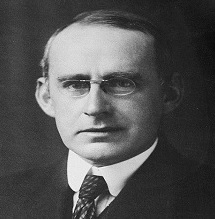Arthur Eddington The Geophysicist

Biography of Arthur Eddington
Early Life
Arthur Eddington the geophysicist, an astronomer and mathematician was born in Kendal, Cambria on 28 December, 1882. His father was running a school and in very young age, Arthur Eddington was awarded a scholarship for Trinity College. After getting his early education he started a job of teacher but later on he became a chief assistant in the academy he was teaching known as, Royal observatory, Greenwich.
Achievements
He found out the longitude of the geodetic station of Malta in 1909. After that, he led an expedition which was going to Brazil. After that, he started a job as professor of Astronomy in Cambridge in 1913 and continued it for almost next 31 years. His first publication was stellar movements and the structure of the universe which he published in 1914. His next book was internal construction of the stars, published in 1926 is still considered as a best seller book.
Contributions
After that, his famous publication was mathematical theory of relativity which was published in English language and it explained the mathematical derivation of theory of gravitation by Einstein. He made many new discoveries in the field of geophysics as he proposed a theory about stars in 1926. He stated that internal pressure of a star which is due to gravitation should maintain the external radiation to make it stable and in equilibrium. He stated that there is an upper side on the star mass which is very vital and important in the occurrence of stars.
Geophysics
Arthur Eddington made extraordinary contributions in the field of geophysics. He proposed a theory and found out mass –luminosity relationship of stars. He said that the mass of a star and its luminosity are directly proportional. If mass will be greater, the luminosity will also be greater while if mass is lesser then luminosity will be as same. He added that the luminosity is the reason behind much brightness of the stars and it varies simultaneously in different conditions and in different stars.
Death
He was one of the greatest geophysicists of all the times. He was facing some serious disorders and as a result died on 22 November, 1944 in London in result of a failed surgical operation. This great man lived for 62 years and we can say that his death was death of an era and history. His important work known as fundamental theory was published after his death.


Leave a Reply